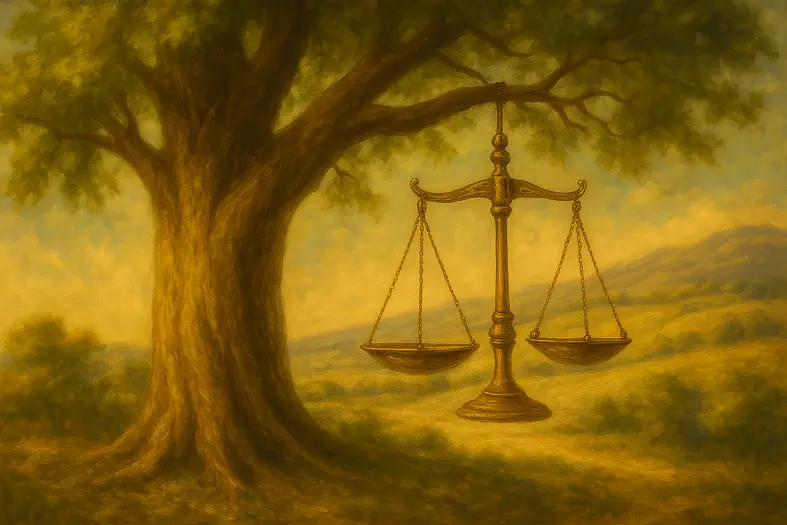


If a city in Israel is led into idolatry, it must be destroyed completely by fire and never rebuilt.
This mitzvah commands that if an Israelite city succumbs to idolatry, it must be burned and never rebuilt, its property destroyed and its inhabitants punished. Rambam (Hilchot Avodat Kochavim 4:6–10) details the severe procedure: the city is judged by the Sanhedrin, its possessions gathered and consumed by fire, and the land left desolate.
The Talmud (Sanhedrin 111b–113a) distinguishes between a mesit (who entices individuals) and an Ir HaNidachat, stressing that communal idolatry corrupts the nation itself. Sefer HaChinuch (Mitzvah 437) explains that the mitzvah protects Israel’s holiness by eradicating systemic idolatry before it spreads. Rashi (Deut. 13:17) emphasizes the words “for Hashem your G-d” — the destruction itself is an offering of loyalty, showing Israel’s uncompromising devotion. Ramban adds that the city becomes a “whole burnt offering” (olah kelilah), consecrated in destruction. Midrash (Sifrei Devarim 93) interprets the eternal ruin as a warning to all of Israel: loyalty to Hashem is absolute.
Commentary & Classical Explanation:
Contrast with Mitzvah 32 (Not to turn a city to idolatry):
Parallel to Sacrificial Offerings:
Safeguarding Communal Integrity
Rejecting Cultural Assimilation
Community Renewal after Corruption
Halachic Boundaries in Modern Context
Protecting Jewish Identity in Diaspora


Mitzvot that prohibit worship of false gods and practices associated with idol worship.
Represents Emunah—the deep, inner trust in Hashem’s presence, oneness, and constant involvement in our lives. This badge symbolizes a heartfelt connection to G-d, rooted in belief even when we cannot see. It is the emotional and spiritual core of many mitzvot.
Used for mitzvot that reflect Judaism’s foundational principles—belief in G-d, reward and punishment, prophecy, Torah from Heaven, and more. These commandments shape the lens through which all others are understood.
Signifies awe and reverence toward Hashem—living with awareness of His greatness and presence.
Represents the concept of spiritual intentionality, purity, and sanctity—set apart for a higher purpose.
Mitzvot that strengthen communal life — showing up, participating, supporting, and belonging. Community is where holiness is shared, prayers are multiplied, and responsibility becomes collective.
Mitzvot that uphold fairness, honesty, and moral responsibility. Justice is kindness structured — ensuring that society reflects G-d’s order through truth, equity, and accountability.
Mitzvot that define and deepen the relationship between a person and their Creator. These include commandments involving belief, prayer, Shabbat, festivals, sacrifices, and personal holiness — expressions of devotion rooted in divine connection.

Dive into mitzvot, prayer, and Torah study—each section curated to help you learn, reflect, and live with intention. New insights are added regularly, creating an evolving space for spiritual growth.

Explore the 613 mitzvot and uncover the meaning behind each one. Discover practical ways to integrate them into your daily life with insights, sources, and guided reflection.

Learn the structure, depth, and spiritual intent behind Jewish prayer. Dive into morning blessings, Shema, Amidah, and more—with tools to enrich your daily connection.

Each week’s parsha offers timeless wisdom and modern relevance. Explore summaries, key themes, and mitzvah connections to deepen your understanding of the Torah cycle.